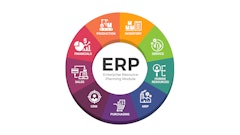New template offers more ROI with execution and planning, order and return, inventory visibility, according to provider
Toronto, Canada — November 21, 2003 — Sockeye Solutions Corp., a developer of adaptive supply chain collaboration apps, announced its Service Parts Collaboration (SPC) Template 3.0.
Sockeye said SPC 3.0 allows business users to configure applications to take advantage of the requirements of their distributed service organization. The application handles the lifecycle associated with managing service parts orders, real-time inventory management, the reverse flow of product and planning.
"Service parts planning, ordering and returns are a critical aspect of supply chain management," said Brian Nickerson, president and CEO of Sockeye Solutions. "Today's extended supply chain environment needs a solution that supports each business' model."
According to Sockeye, among the benefits of SPC 3.0 are inventory visibility and real-time reservation, altering notifications and escalation, and tracking of remote inventory and returns by customer, service agent, serial number or geography, as well as a federated network open architecture and adaptive application configuration.
The provider said SPC 3.0 offers an environment for optimizing the parts requirements of customers or field service engineers. Customers or field engineers can enter orders either manually through a secure Web interface that offers data entry or pulls them from other order entry (CRM) systems currently in place.
Fulfillment (ATP) of parts availability is provided based on the engineer's preferred sourcing locations, and the workflow then continues through to shipment, customer servicing and the service returns (RMA) of field parts.
The service parts collaboration maintains optimal inventory levels at all supply chain locations, according to user-definable business rules and inventory targets. It manages service part forecasts through user-defined algorithms and combines these with actual service order demands to plan for part replenishments and transfers in the short-term windows that are required by service organizations.
![Pros To Know 2026 [color]](https://img.sdcexec.com/mindful/acbm/workspaces/default/uploads/2025/08/prostoknow-2026-color.mduFvhpgMk.png?auto=format%2Ccompress&bg=fff&fill-color=fff&fit=fill&h=100&q=70&w=100)



![Pros To Know 2026 [color]](https://img.sdcexec.com/mindful/acbm/workspaces/default/uploads/2025/08/prostoknow-2026-color.mduFvhpgMk.png?ar=16%3A9&auto=format%2Ccompress&bg=fff&fill-color=fff&fit=fill&h=135&q=70&w=240)








